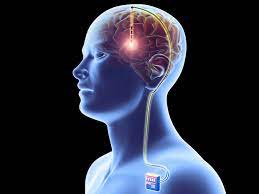Connectomics-based Brain-Pacemaker Surgery: A Game-Changer
By
Dr. Anirban Deep Banerjee
in
Jan 08, 2024
Mr. Kajal Baran Majumdar, a 60 year old banker from Howrah, West Bengal, suffering from intractable Parkinson’s disease, successfully underwent an ingenuous brain-pacemaker (deep brain stimulation) surgery by Dr. Anirban Deep Banerjee, Associate Director- Neurosurgery, at Medanta Hospital, Gurgaon.
Patient was suffering from resting tremors (shaking movements), rigidity (whole-body stiffness) and bradykinesia (slowness of movements) for many years. From last few years the effect of medication wearied down and patient started showing side-effects due to escalating dosage of medications. Patient had limited mobility and mostly confined to home due to advanced Parkinson’s disease. He was especially incapacitated by certain tenacious axial symptoms such as ‘freezing of gait’. His quality of life was severely impaired.
Patient was evaluated by the Medanta Institute of Neurosciences Movement Disorder Clinic, whereby he was advised for Connectomic-Based Deep Brain Stimulation (Sub thalamic Nucleus Stimulation) for advanced Parkinson’s disease.
Tractograhy (connectomics)-based stereotactic Brain CT/MR fusion was done to locate the bilateral Sub-thalamic nucleus, intra-operative MER recordings and stimulation were done to ensure the best trajectory for chronic stimulation. Patient was eventually implanted with the constant-voltage based Brain-Pacemaker (Deep Brain Stimulation) System.
“The Connectomics-aided technology used in this patient’s brain-pacemaker surgery is the future of deep brain stimulation surgery whereby we can modulate entire brain-circuits dealing with specific brain-functions (‘connectomic surgery’) rather than just stimulating static brain targets (as is conventionally done). Neural-circuits neuromodulation significantly enhances the efficacy of this life-changing procedure, especially for certain intractable axial symptoms such as ‘freezing of gait’ (present in this patient), which usually do not respond adequately to conventional brain-pacemaker surgery”, elucidated Dr. Banerjee. “Considerable improvement in patient’s symptoms was noted during the course of this awake neurosurgical procedure itself”, said Dr. Banerjee.
Patient’s brain-pacemaker was then programmed and checked for best parameters. “With more than eight months of follow-up now, patient is significantly mobile with steadily improving ‘on-time’; he is doing all his activities independently. Medications dosage has also reduced considerably and so has the side-effects”, explained Dr. Banerjee.
“There is remarkable overall improvement in my activities of daily living and quality of life”, said a rejuvenated Mr. Majumdar, just back from a long-desired family vacation to the Hills of Bengal. His family is also delighted to get him back to health.

